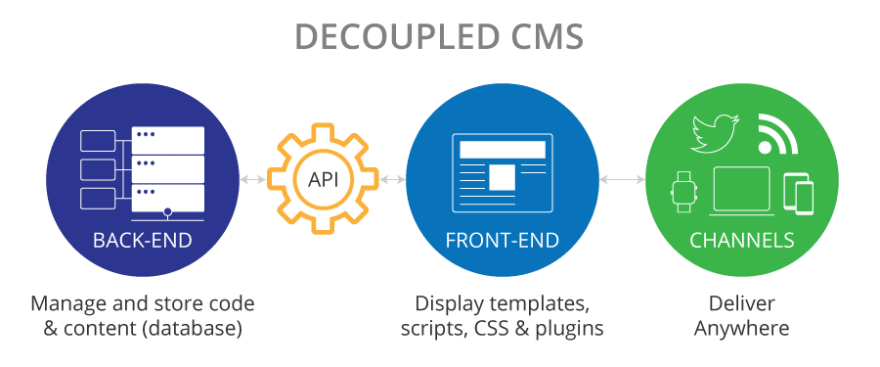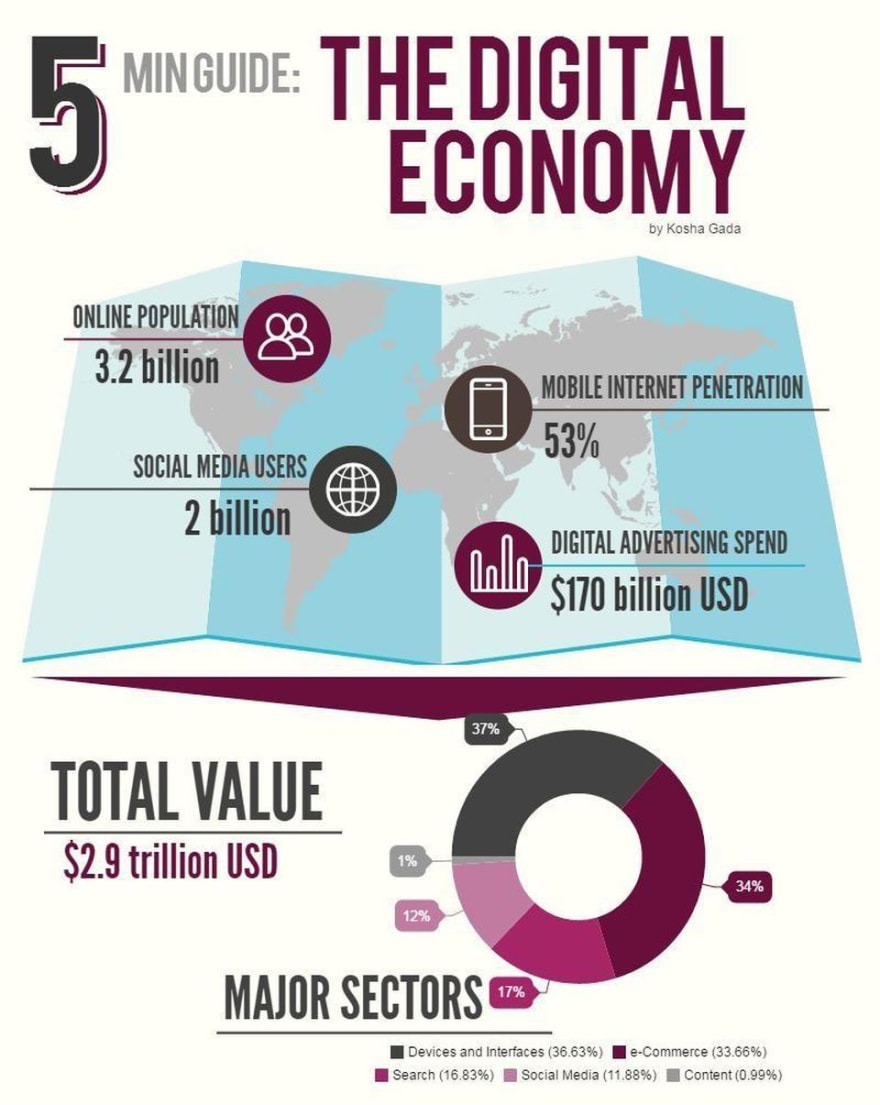
Sara Cunningham
Posted on June 21, 2020

Digital transformation is a cry for headless CMS
My Work
Both of my internships at Valley Bank and HAX have something in common: a headless CMS. Over the past couple of weeks, I have become very familiar with them and believe they can be perfect for businesses today.
What is a CMS?
There are many great resources online explaining headless CMS and the differences between all of the CMS's. I will link a lot of great articles at the bottom of this post, but I will briefly explain the different kinds of CMS' for those who are unfamiliar.
A content management system (CMS) is a "computer software or an application that uses a database to manage all content, and it can be used when developing a website" AT Internet.
Coupled CMS
A coupled CMS is when the back-end and front-end functions are coupled together. In a coupled CMS, everything such as templates, back-end interfaces, front-end interfaces, and code are combined into one application. Many of the top CMS platforms like WordPress and Drupal are coupled. Using a coupled CMS is useful if your business only needs one environment that will be easy to set up and maintain. Consequently, since the back-end and front-end are tied together, there are disadvantages. The main problems include looking after a lot of custom code, possible security risks, and slow performance. Using a coupled CMS is ideal for wanting to publish something that doesn't need to be viewed on multiple channels.
Decoupled CMS
A decoupled CMS separates the back-end and front-end. A developer can edit something in the back-end, and those edits will be pushed to the front-end using an API. Using a decoupled CMS provides better security than a coupled CMS and is suitable for scalability. Drawbacks from using a decoupled CMS is that you have to control the back-end and front-end, which can be costly and time-consuming. A decoupled CMS provides more complexity but is still best suited for only web-focused channels.
Headless CMS
A headless CMS removes the entire front-end (head meaning front-end). Differing from the other CMS', a headless CMS has a unique architecture since it eliminates the presentation layer. In a headless CMS, the API makes the content available through any channel or platform. Other benefits for using a headless CMS is that developers have complete freedom in what programming language and tools, provides better security, and more control without having to touch the CMS code. A headless CMS disadvantage is that it doesn't offer channel-specific support, so developers will have to do that on their own. Another problem is that marketers will have limited abilities and will have to rely on developers. A headless CMS is best if you are utilizing multiple channels.
After learning about the different kinds of CMS, which one would you choose depending on your business needs?
Headless CMS for Businesses
The World is Digital
71% of U.S. broadband households own a connected entertainment device. -NCTA
The digital market is exponentially growing. Not too long ago, the primary way of getting information was from a website, but that is changing now. People are viewing information on websites, apps, AR, VR, wearable devices, etc. As these are becoming more popular, businesses need to make sure they are present on all of those channels to cater to their customers. Ultimately if a company doesn't incorporate digital strategy into their overall strategy, they are losing an opportunity.
Currently in the U.S. there are approximately eight networked devices per person, a number expected to climb to 13.6 per person by 2022.
Today, U.S. households own an average of 11 connected devices, including seven with screens to view content (e.g. smartphones or TVs). -Deloitte
From those remarkable statistics listed above, you can see that the world is digital. Americans are using devices more, and that seems only to be increasing. Using a headless CMS will allow businesses to easily connect with their customers no matter what platform they are on. Not only will this reach the current customers, but it will also keep your business ahead of the competition.
Agility & Scalability
Using a headless CMS will increase a business's agility and scalability. A company must be agile to succeed in the current world. Change is never easy for anyone, especially a business, but through a CMS, it will ease the difficulties. In a traditional coupled CMS, you have to focus on design first, and then you can start working on content. In contrast, a headless CMS can work on design and content at the same time since the front-end is removed. Completing these two tasks simultaneously increases productivity and reduces delays resulting in shortening your time to market.
As there are multiple channels to accommodate, you must understand how the information should be received through different channels. Thinking about the structure and layout can be very time consuming and troublesome. Through a headless CMS, you will have a lot of reusable components, making it easier to manage, reorganize, and configure.
Resources & References
- Understanding coupled, decoupled, hybrid, and headless CMS platforms
- The Pros and Cons of Decoupled and Headless CMS Architecture
- IoT Has Quietly and Quickly Changed Our Lives
- U.S. Households Have an Average of 11 Connected Devices — And 5G Should Push That Even Higher
- The Digital Economy In 5 Minutes

Posted on June 21, 2020
Join Our Newsletter. No Spam, Only the good stuff.
Sign up to receive the latest update from our blog.




